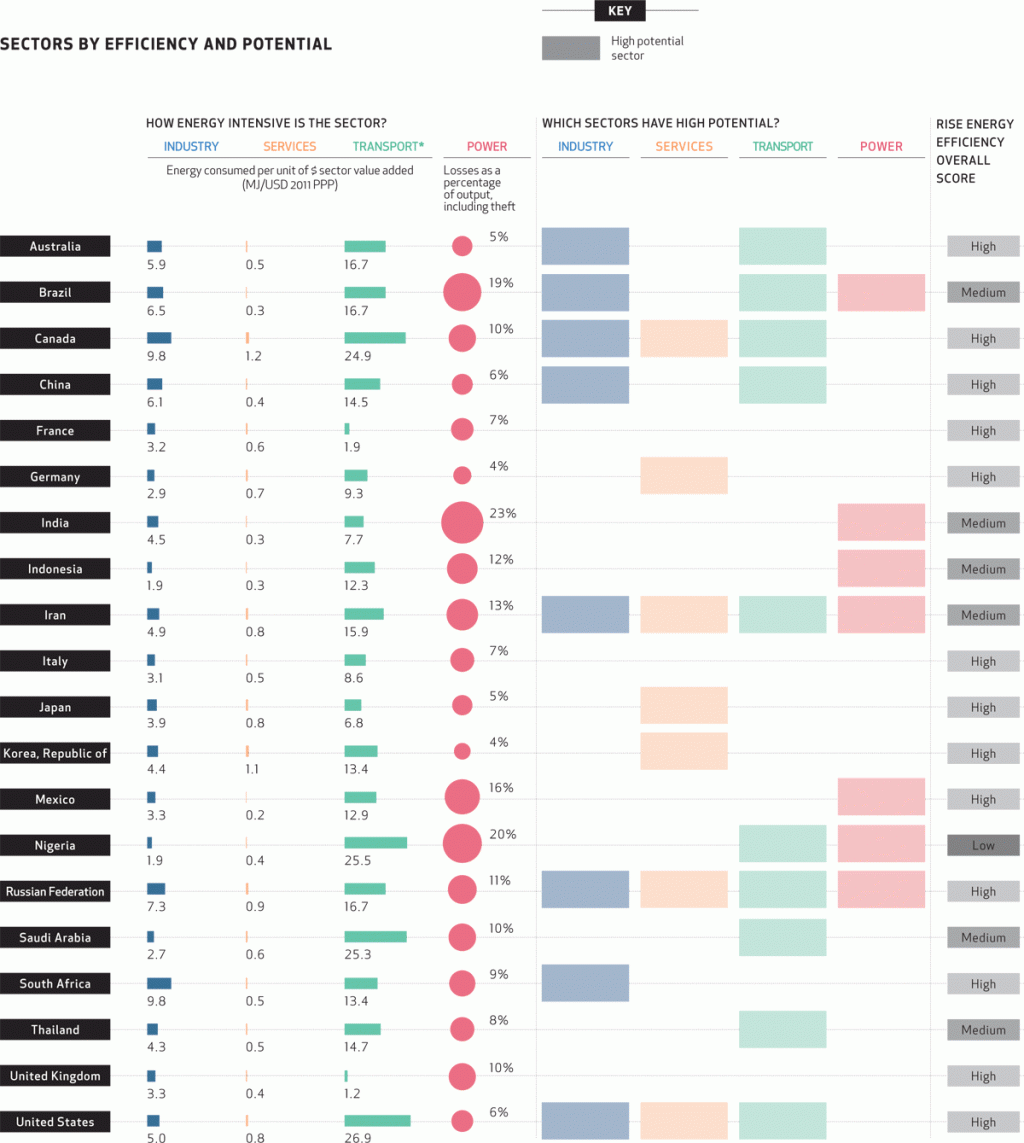Energy Efficiency Potential by sector

Quick Facts
The top 20 energy consuming economies globally –high- impact countries – accounted for more than 75 percent of global total primary energy supply (TPES). Four countries alone, China, the United States, India and the Russian Federation, accounted for nearly 50 percent of TPES.
Energy savings realized globally between 2012–14 were equivalent to the entire energy consumption of Brazil and Pakistan combined in 2014.
Brazil, Iran, Saudi Arabia, South Africa, and Thailand saw their energy intensities increase over 2012-14.
Industry has contributed much to declining global energy intensity, with an annual reduction of 2.2 percent in 2012–14 while the residential sector saw a small increase in energy intensity.
Context
- Energy efficiency offers a huge opportunity to embark on a sustainable development path and for the industrialized world and fast growing economies this should be top of the to do list. Reducing energy intensity, which measures the amount
of energy needed to produce a dollar of gross domestic product (GDP), is smart growth even for the least developed economies.
- Since 1990, primary energy intensities have been decreasing worldwide to converge towards 5.5 megajoules per dollar of GDP. Some high-income European countries, Denmark, Italy and the United Kingdom, have already gone as low as 3.4 megajoules per dollar of GDP, which corresponds to the 2030 global target for energy efficiency.
- The intensity of final energy consumption in industry, agriculture, services, and transport sectors are on a long- term downward trend. Improvements in the efficiency of thermal power generation and power networks losses have been relatively slow. Widespread diffusion of fuel efficiency standards helped accelerate reductions in energy intensity of the transport sector. The residential sector is a large and fast growing segment of energy consumption and is becoming more energy intensive.
- To reach the 2030 objective for energy efficiency, we must focus on the sectors with significant room for improvement, starting with the transport sector which concentrates two- thirds of global oil consumption. The switch from coal to gas in industrial processes, together with the electrification of energy use and the adoption of super-efficient appliances in the buildings sector also offer sizeable potential for energy savings.
* 2012 data
NOTE: A sector is considered high potential in a country if the energy intensity is at or above the average of the 20 high impact countries.
SOURCES: International Energy Agency (IEA) and the World Bank. 2017. “Progress Towards Sustainable Energy: Global Tracking Framework 2017” (April), World Bank, Washington, DC.
Regulatory Indicators for Sustainable Energy (RISE), World Bank Group, 2017.
Related Heatmaps

Data analysis
16 Oct 2024
SEforALL Analysis of SDG7 Progress - 2024

Data analysis
18 Jul 2023
Chilling Prospects: Global Access to Cooling Gaps 2023

Data analysis
18 Jul 2023
Chilling Prospects: Policy progress in Cambodia with a region-leading National Cooling Action Plan

Data analysis
18 Jul 2023
Chilling Prospects: Innovative financing at CLASP
